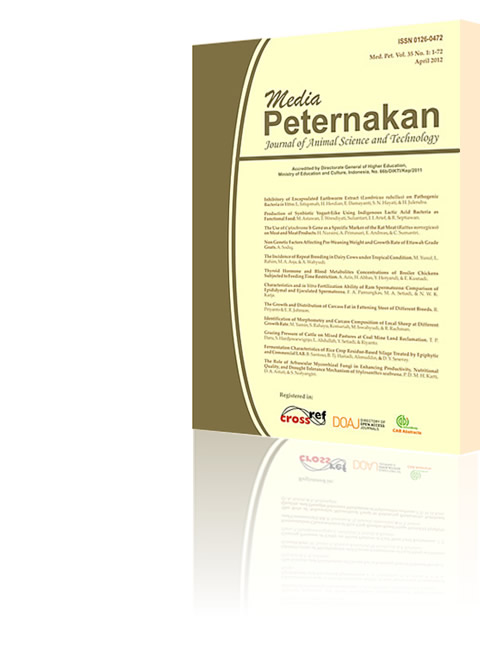-
M Astawan
-
T Wresdiyati
-
. Suliantri
-
I I Arief
-
R Septiawan
Keywords:
yoghurt-like, synbiotic, indigenous lactic acid bacteria, functional food
Abstract
Yoghurt is a product of fermented milk using Lactobacillus bulgaricus and Streptococcus thermophilus as culture starter. Indigenous probiotic lactic acid bacteria, Lactobacillus plantarum 2C12 or Lactobacillus acidophilus 2B4, were applied in the making of functional synbiotic yoghurt-like with 5% of fructo-oligosaccharide (FOS) as a prebiotic source. The aim of this study was to determine the best formula of functional synbiotic yoghurt-like among four formulas: F1 (L. bulgaricus + S. thermophilus), F2 (L. bulgaricus + S. thermophilus + L. plantarum 2C12), F3 (L. bulgaricus+ S. thermophilus + L. acidophilus 2B4), and F4 (L. bulgaricus + S. thermophilus + L. plantarum 2C12 + L. acidophilus 2B4) to be choosen and followed detection of it's flavor to improve the product quality and consumer acceptance. The results showed that the F3 synbiotic yogurt made from mixed culture L. bulgaricus, S. thermophilus, and L. acidophilus 2B4 had the highest antibacterial effect against Enteropathogenic Escherichia coli (EPEC). Addition of 1.75% natural corn starch as a stabilizer produced optimum improvement in yoghurt consistency and minimize whey separation. Result of sensory evaluation indicated that the yoghurt with addition of 1% strawberry flavor and 0.1% vanilla flavor were ranked at first and second. Yoghurts were still good to be consumed after 15 d storage period at the refrigeration temperature (10 oC).
Downloads
Download data is not yet available.
Author Biographies
M Astawan
Department of Food Science and Technology, Faculty of Agricultural Engineering and Technology, Bogor Agricultural University
Jln. Kamper, Darmaga IPB Campus, Bogor 16680, Indonesia
T Wresdiyati
Department of Anatomy, Physiology, and Pharmacology, Faculty of Veterinary Medicine, Bogor Agricultural University
. Suliantri
Department of Food Science and Technology, Faculty of Agricultural Engineering and Technology, Bogor Agricultural University
Jln. Kamper, Darmaga IPB Campus, Bogor 16680, Indonesia
I I Arief
Department of Animal Production and Technology, Faculty of Animal Science, Bogor Agricultural University
Jln. Agatis, Darmaga IPB Campus, Bogor 16680, Indonesia
R Septiawan
Department of Food Science and Technology, Faculty of Agricultural Engineering and Technology, Bogor Agricultural University
Jln. Kamper, Darmaga IPB Campus, Bogor 16680, Indonesia
Authors submitting manuscripts should understand and agree that copyright of manuscripts published are held by Media Peternakan. The statement to release the copyright to Media Peternakan is stated in Form A. This work is licensed under a Creative Commons Attribution-ShareAlike 4.0 International License (CC BY-SA) where Authors and Readers can copy and redistribute the material in any medium or format, as well as remix, transform, and build upon the material for any purpose, but they must give appropriate credit (cite to the article or content), provide a link to the license, and indicate if changes were made. If you remix, transform, or build upon the material, you must distribute your contributions under the same license as the original.



